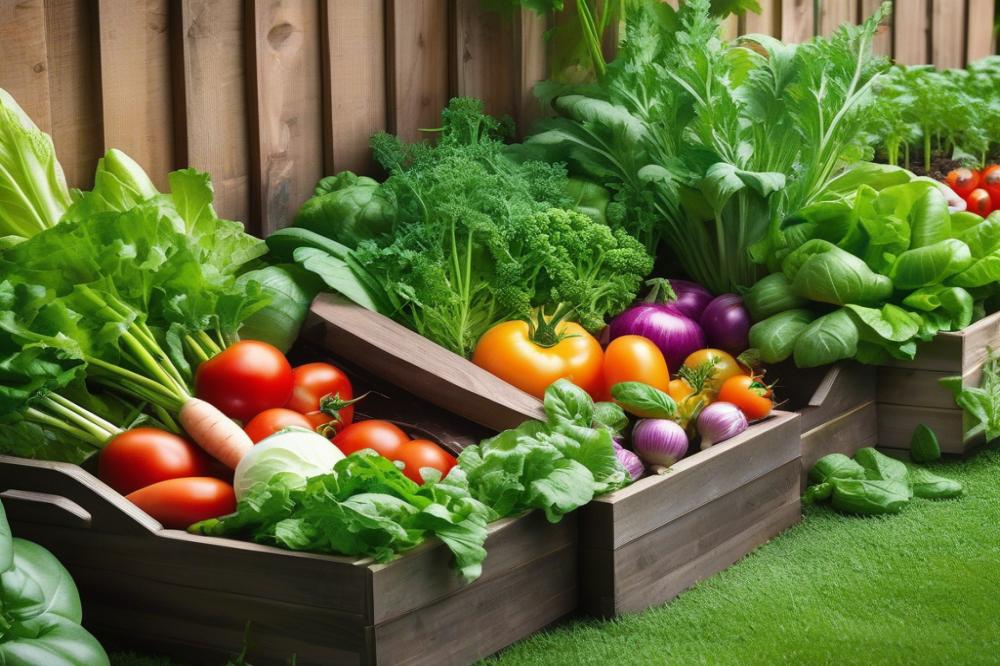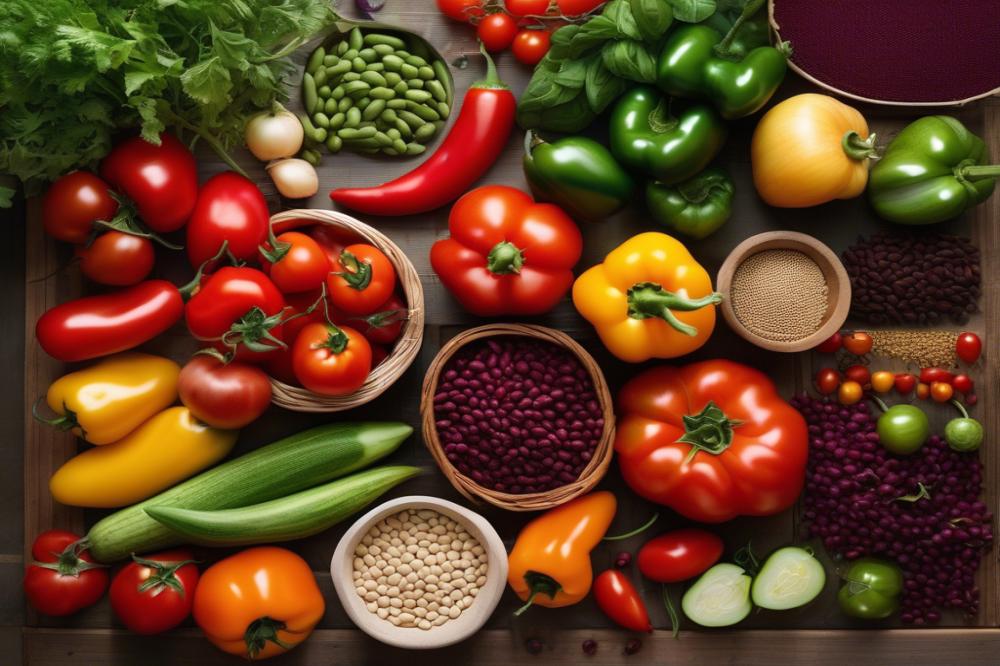Overview of Aunt Ruby’s German Green Tomatoes
Aunt Ruby’s German Green Tomatoes are a beloved heirloom variety known for their distinctive flavor and striking appearance. These tomatoes are not your average red varieties; instead, they offer a rich, complex taste that many gardeners cherish. With their greenish-yellow hue and ribbed texture, they stand out in any vegetable garden. growing tomatoes like this can be a rewarding experience, allowing you to add something special to your meals and impress your friends.
Importance of heirloom tomatoes in Gardening


heirloom tomatoes play a vital role in sustainable gardening. Unlike store-bought hybrids, these varieties boast unique flavors and diverse characteristics. Gardeners value these plants not just for their taste but also for their history and resilience. Cultivating heirlooms allows individuals to preserve genetic diversity while enjoying a variety of homegrown produce. Anyone interested in organic gardening should consider including these historic varieties in their gardens.
Benefits of Growing Aunt Ruby’s German Green Tomatoes


Opting to grow Aunt Ruby’s German Green Tomatoes offers numerous benefits. These plants thrive in sunny locations, which is essential for optimal development. The fruits are not only delicious but also provide a great source of vitamins. Their robustness means they are often more resilient to common tomato diseases and pests. Implementing effective pest control strategies can further enhance their success. With proper tomato care and attention, the harvest can be abundant, making them an excellent choice for vegetable gardening enthusiasts.
Choosing the Right Location


Finding a sunny location is vital for growing Aunt Ruby’s German Green Tomatoes. These heirloom tomatoes thrive in full sun, so look for a spot that receives at least six to eight hours of direct sunlight each day. When plants receive enough light, their growth becomes stronger, and the fruit develops a rich flavor. Shadowed areas can stunt their growth and lead to weak plants.
Soil preparation is another crucial step in gardening. Quality soil supports healthy plants and helps with tomato care. Before planting, enrich the ground by mixing in organic compost or well-rotted manure. This practice enhances soil structure and adds necessary nutrients. Testing your soil’s pH can also guide you; tomatoes flourish in slightly acidic to neutral soil, ideally between 6.0 and 7.0. Adjusting pH levels with soil amendments can make a significant difference in your garden’s success.
Choosing a Suitable Garden Bed or Container
Your choice of garden bed or container impacts growth as well. If you’re working with a traditional garden, raised beds provide excellent drainage and warmth. They allow for easier access and can reduce soil compaction over time. Alternatively, containers are ideal for those with limited space. Select large pots with adequate drainage holes. It’s often recommended to use a pot that holds at least five gallons of soil per plant.
Proper spacing between plants is also essential, regardless of the planting method. Spacing allows air circulation, reducing the risk of tomato diseases and pests. Close quarters can create a humid environment, which pests love. When planting tomatoes in a bed, space them at least 24 to 36 inches apart, ensuring they have room to grow and flourish under the sun.
Planting Aunt Ruby’s German Green Tomatoes
Timing for Planting Tomatoes in Various Climates
Tomatoes thrive in warm weather. The best time to plant them depends on your climate. In warmer regions, you can plant as early as mid-March. However, if you live in a cooler area, wait until late May or early June. Tomato plants need at least 60°F (15°C) soil temperature to grow well. Using a frost date calendar can be helpful. Watch for the last frost and make your move.
Step-by-Step Planting Instructions
Begin by selecting a sunny location for your garden. Ideally, tomatoes need six to eight hours of sunlight daily. Prepare the soil by mixing compost to improve its nutrients. Dig holes deep enough for the plants, at least 2-3 inches deeper than the seedlings. Place each seedling gently into the hole, covering them with soil. Water them well to settle the soil around the roots. Mulching can help retain moisture and suppress weeds.
Spacing and Support Techniques for Healthy Growth
Space your plants about 24 to 36 inches apart. This allows each tomato plant enough room to grow and receive sunlight. Providing support is essential for heirloom tomatoes, which can grow tall. Use stakes or cages to keep the plants upright and healthy. As they grow, tie the stems to the stakes to offer additional support. Consider regular inspection for signs of tomato diseases and pest control. Regular tomato care ensures robust and fruitful plants.
Implementing these gardening tips can enhance your experience in vegetable gardening. Organic gardening practices protect the environment while giving you delicious tomatoes in return. Happy planting!
Tomato Care Throughout the Growing Season
Watering Techniques for Organic Gardening
Proper watering is critical in the life of Aunt Ruby’s German Green Tomatoes. Soil should always remain moist, yet not waterlogged. Deep watering is preferred. Apply water at the base of the plant to encourage deep root growth. Early mornings are the best time for this task, allowing plants to absorb moisture before the sun heats up. During dry spells, tomatoes may need more frequent watering. Consider using drip irrigation or soaker hoses for even moisture distribution. Organic gardening often emphasizes the quality of water. Rainwater is ideal, but tap water can work too, as long as it’s not too cold.
Fertilization Methods to Enhance Growth
Fertilizing is essential when planting tomatoes. Balanced fertilizers, high in calcium, promote healthy fruit development. Organic options, such as compost or well-rotted manure, can nourish your plants. Apply fertilizers when you first plant your tomatoes and again every few weeks. Monitoring the plants is important. If leaves appear yellow, it might indicate nutrient deficiency. Avoid over-fertilizing, which can lead to excessive foliage rather than fruit. Remember that sustainable gardening practices also involve maintaining soil health.
Pruning and Staking for Better Air Circulation and Sun Exposure
Pruning helps focus energy on fruit production. Removing lower leaves allows for better airflow, which reduces the risk of tomato diseases. Aim to trim suckers, those small shoots that grow at the leaf nodes. Staking your plants provides support, keeping them off the ground. Supports prevent fruits from rotting and help with pest control. Choosing sturdy stakes or cages offers stability. Make sure your plants have plenty of space between them. This encourages airflow and sun exposure, both crucial for healthy growth. Sunlight is vital for developing delicious heirloom tomatoes, so position them in a sunny location.
Pest Control and Disease Management
Common Pests That Affect Tomato Plants
Tomato plants face threats from various pests. Aphids are tiny insects that suck sap, weakening the plants. Another common pest is the tomato hornworm. This green caterpillar can quickly defoliate your plants. Whiteflies gather on the undersides of leaves, causing stress. Recognizing these pests early is crucial for the health of your heirloom tomatoes. Regular inspections can help catch infestations before they escalate.
Natural Pest Control Methods for Sustainable Gardening
Using natural pest control methods promotes organic gardening. Companion planting is one effective strategy. For example, planting marigolds can deter nematodes and other harmful insects. Neem oil is another powerful organic solution. Spraying a diluted neem oil mixture can reduce infestations. Encouraging beneficial insects, such as ladybugs, can improve pest management. These insects feast on aphids and other harmful pests. Keeping your garden clean and tidy also helps. Removing dead plant material reduces potential hiding spots for pests.
Identifying and Treating Tomato Diseases Effectively
Tomato diseases can negatively impact growth and yield. Blossom end rot is a common issue that creates dark spots at the bottom of fruits. This problem often arises from inconsistent watering or calcium deficiency. Fungal diseases like powdery mildew can appear in humid conditions. Proper airflow and spacing between plants can prevent this. Inspect leaves frequently for unusual spots or wilting, as early detection allows for quick treatment. Using organic fungicides can help combat these diseases. Always follow the instructions for any products used on your vegetable gardening.
In maintaining healthy tomato care, paying attention to symptoms is essential. Support healthy growth by ensuring your plants are in a sunny location. Always be proactive in your gardening tips. This practice will lead to a more fruitful harvest and fewer headaches.
Harvesting and Enjoying Your Tomatoes
Signs that Aunt Ruby’s German Green Tomatoes are Ready to Harvest
When the tomatoes begin to turn a deep green, they are close to being ripe. Observing the skin is important, as it should be slightly glossy and firm to the touch. A gentle squeeze can help determine if they are ready; they should feel solid but not rock-hard. Another indicator is the color; a gentle yellowish tint near the stem can signal ripeness. Additionally, the size can also give clues; ideally, they should reach at least 3 to 4 inches in diameter. Keep a close watch on them during warm days, as heirloom varieties can ripen swiftly.
Best Practices for Harvesting and Handling
Approach the plants carefully to avoid damaging the stems and leaves. Using sharp scissors or garden snips will make the process smoother. Cut the stem about an inch above the fruit, leaving stems attached to avoid bruising. Always harvest in the cooler part of the day, either early morning or late afternoon, to prevent stress on the plants.
Pest control is key to keeping your tomatoes safe until they are ready to eat. Be aware of any signs of pests or diseases affecting your plants. Once harvested, store the tomatoes at room temperature. Unlike other varieties, these heirloom types develop better flavors when allowed to ripen off the vine. Enjoy them fresh in salads, or try roasting them for a savory dish. To maximize flavors, consider pairing them with herbs from your organic garden.
Lastly, maintaining a sunny location for your tomato plants will help develop their full taste potential. If you planted tomatoes in a vegetable garden, cherish those little moments during harvesting. Nothing compares to the satisfaction of enjoying what you’ve cultivated.
Final Thoughts on Growing Heirloom Tomatoes
Growing Aunt Ruby’s German Green Tomatoes can be rewarding. Remember to use rich soil, provide ample sunlight, and water consistently. These tomatoes thrive when given the right amount of attention. Regular pruning can also help promote better air circulation and healthier plants. Applying mulch helps maintain moisture in the soil. Fertilizing appropriately throughout the season boosts their growth as well.
Heirloom varieties bring a distinct charm to your garden. These unique plants often have flavors that surpass standard hybrids. Embracing them allows you to explore different tastes and textures. Exploring heirloom tomatoes adds diversity and helps keep gardening exciting.
Sustainable gardening practices make a big difference. Composting kitchen scraps and yard waste enriches the soil and reduces waste. Crop rotation protects your plants and promotes healthier soil. Implementing these practices can lead to a thriving garden ecosystem.
Gardening tips such as starting seeds indoors or using protective coverings can increase your chances of successful growth. Don’t shy away from experimenting with your techniques. Every gardener learns through trial and error. Ultimately, these treasured tomatoes are worth the effort.



